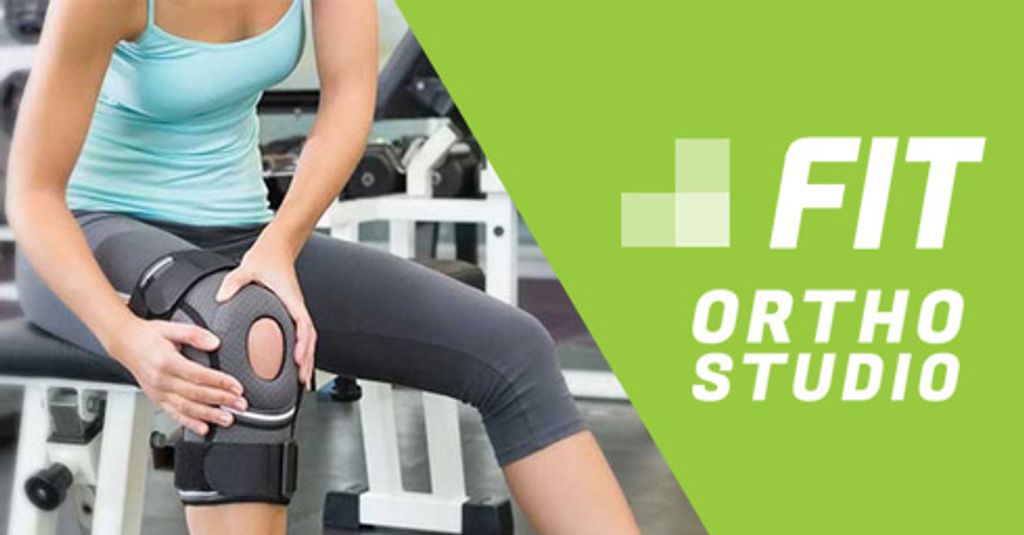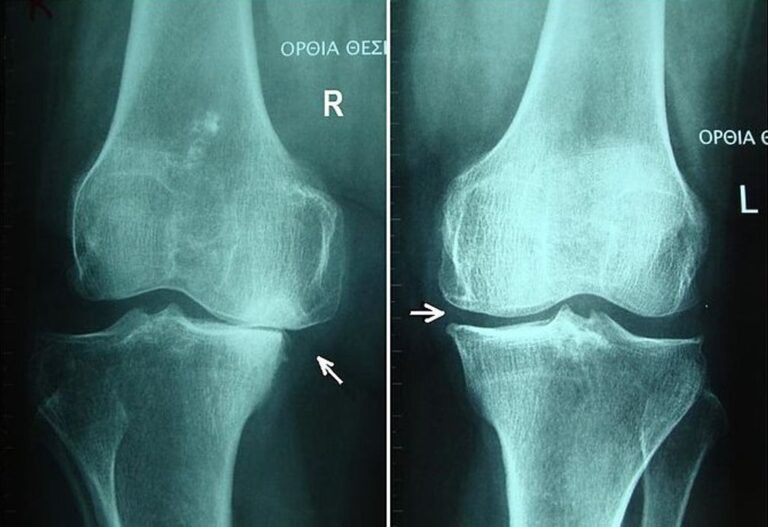How Physical Therapy Can Help Relieve Knee Pain
Knee pain can be a debilitating condition that affects many individuals. Whether it is caused by an injury, overuse, or a chronic condition, living with knee pain can significantly impact daily activities and quality of life. Fortunately, physical therapy offers effective solutions for managing and relieving knee pain. By addressing the underlying causes of knee pain and implementing targeted treatment techniques, physical therapy can help individuals regain mobility, reduce pain, and prevent future injuries. In this article, we will explore the benefits of physical therapy for knee pain and discuss the different types of physical therapy techniques that can be used. Additionally, we will provide key takeaways to help you understand the importance of physical therapy in relieving knee pain.
Key Takeaways
- Physical therapy is a non-invasive and effective treatment option for relieving knee pain.
- It helps in managing pain, improving mobility, and strengthening the knee.
- Physical therapy techniques include manual therapy, therapeutic exercises, electrotherapy, and joint mobilization.
- When choosing a physical therapist, consider their credentials, experience, and specialization in knee rehabilitation.
- Patient reviews and testimonials can provide valuable insights into the quality of care provided by a physical therapist.
Understanding Knee Pain
Causes of Knee Pain
Knee pain can be caused by a variety of factors, including injury, overuse, and age-related changes in the knee joint. Common knee injuries such as ligament tears and cartilage damage can also contribute to knee pain. Risk factors for knee pain may include obesity, poor posture, and improper footwear. It’s important to understand these factors in order to effectively address and manage knee pain.
Common Knee Injuries
Knee injuries are a common problem that can cause significant pain and discomfort. Sprains and strains are two of the most common types of knee injuries. A sprain occurs when the ligaments in the knee are stretched or torn, while a strain is an injury to the muscles or tendons surrounding the knee. Torn meniscus is another common knee injury, which occurs when the cartilage in the knee is torn. This can cause pain, swelling, and limited range of motion. Patellofemoral pain syndrome, also known as runner’s knee, is a condition that causes pain in the front of the knee. It is often caused by overuse or improper alignment of the patella (kneecap).
Risk Factors for Knee Pain
There are several risk factors that can contribute to the development of knee pain. Age is a significant risk factor, as the likelihood of experiencing knee pain increases with age. Obesity is another common risk factor, as excess weight puts added stress on the knees. Previous knee injuries can also increase the risk of developing knee pain, as they can weaken the structures of the knee. Occupation can play a role as well, with jobs that require repetitive kneeling, squatting, or lifting putting individuals at a higher risk. It’s important to be aware of these risk factors and take steps to prevent knee pain.
Benefits of Physical Therapy
Pain Management
Pain management is a crucial aspect of physical therapy for knee pain. Managing pain effectively allows patients to participate fully in their rehabilitation program and improves overall outcomes. Physical therapists use a variety of techniques to help patients manage their pain, including manual therapy, therapeutic exercises, and electrotherapy.
One common technique used in pain management is transcutaneous electrical nerve stimulation (TENS), which involves the use of low-voltage electrical currents to block pain signals. This technique can provide temporary relief from knee pain and allow patients to engage in their therapy sessions more comfortably.
In addition to these techniques, physical therapists may also provide education on ergonomics and posture to help patients reduce stress on the knee joint and minimize pain. By addressing pain management as part of the treatment plan, physical therapy can help individuals with knee pain regain function and improve their quality of life.
Improved Mobility
Physical therapy can greatly improve mobility in individuals experiencing knee pain. Through a combination of therapeutic exercises and manual therapy techniques, physical therapists can help patients regain range of motion and flexibility in their knees. These exercises may include stretching, strengthening, and balance training, all of which contribute to improved mobility.
In addition to exercises, physical therapists may also use joint mobilization techniques to help restore proper movement and alignment of the knee joint. This can help reduce pain and stiffness, allowing for greater mobility.
It is important to note that the specific exercises and techniques used in physical therapy will vary depending on the individual’s condition and needs. A physical therapist will assess the patient’s mobility limitations and create a personalized treatment plan to address their specific goals and challenges.
Tips for improving mobility:
- Follow the physical therapist’s instructions and recommendations closely.
- Be consistent with attending therapy sessions and completing prescribed exercises at home.
- Communicate any changes or concerns with the physical therapist to ensure the treatment plan is adjusted accordingly.
- Take breaks and rest when needed to avoid overexertion and further injury.
By focusing on improving mobility, physical therapy can help individuals with knee pain regain their ability to perform daily activities and enjoy a better quality of life.
Strengthening the Knee
Strengthening the knee is a crucial aspect of physical therapy for knee pain. Strong muscles around the knee joint provide stability and support, helping to alleviate pain and prevent further injuries. Physical therapists use a variety of exercises to target the muscles around the knee, including quadriceps, hamstrings, and calf muscles.
One effective exercise for strengthening the knee is the straight leg raise. This exercise involves lying on your back with one leg straight and the other bent. Slowly lift the straight leg off the ground, keeping the knee straight, and then lower it back down. Repeat this exercise for a few repetitions on each leg.
In addition to exercises, physical therapists may also recommend using resistance bands or weights to further challenge the muscles and promote strength development. It’s important to follow the guidance of a qualified physical therapist to ensure proper form and avoid injury.
Remember, consistency is key when it comes to strengthening the knee. Regularly performing the prescribed exercises and gradually increasing the intensity will yield the best results.
Preventing Future Injuries
Preventing future injuries is a crucial aspect of knee pain management. By taking proactive measures, individuals can reduce the risk of further damage to their knees. Here are some key strategies to prevent future knee injuries:
Maintain a healthy weight: Excess weight puts additional stress on the knees, increasing the likelihood of injury. By maintaining a healthy weight through a balanced diet and regular exercise, individuals can alleviate strain on their knees.
Wear appropriate footwear: Wearing proper footwear that provides adequate support and cushioning can help prevent knee injuries. Shoes with good arch support and shock absorption can reduce the impact on the knees during physical activities.
Warm up and stretch: Before engaging in any physical activity, it is important to warm up the muscles and stretch properly. This helps to improve flexibility and reduce the risk of muscle strains or tears.
Tip: Incorporate dynamic stretches, such as leg swings and lunges, into your warm-up routine to target the muscles around the knees.
Use proper technique: Whether it’s during sports or everyday activities, using proper technique is essential for preventing knee injuries. Learning the correct form and posture can help reduce the strain on the knees and minimize the risk of injury.
Gradually increase intensity: When starting a new exercise or activity, it is important to gradually increase the intensity and duration. Sudden changes in intensity can put excessive stress on the knees, leading to injuries.
By following these preventive measures, individuals can significantly reduce the risk of future knee injuries and maintain their overall knee health.
Types of Physical Therapy
Manual Therapy
Manual therapy is a hands-on approach used by physical therapists to treat knee pain. It involves the therapist using their hands to manipulate and mobilize the knee joint and surrounding tissues. This technique can help reduce pain, improve joint mobility, and increase flexibility. The therapist may use various techniques such as joint mobilization, soft tissue mobilization, and muscle energy techniques to target specific areas of the knee. Manual therapy is often combined with other treatment modalities to provide comprehensive care for knee pain.
In addition to providing immediate relief, manual therapy can also have long-term benefits. Research has shown that manual therapy can improve function and reduce disability in individuals with knee pain. It can also enhance the effectiveness of other treatment interventions, such as therapeutic exercises and electrotherapy.
To ensure the best outcomes, it is important to seek a physical therapist who is skilled and experienced in manual therapy techniques for knee pain. They should have specialization in knee rehabilitation and a track record of positive patient outcomes. Reading patient reviews and testimonials can also provide valuable insights into the therapist’s expertise and the effectiveness of their treatment approach.
Therapeutic Exercises
Therapeutic exercises play a crucial role in the rehabilitation of knee pain. These exercises are designed to strengthen the muscles around the knee, improve flexibility, and promote balance and stability. They are tailored to each individual’s specific needs and may include a combination of stretching, strengthening, and range of motion exercises.
In addition to targeting the knee, therapeutic exercises also focus on strengthening the surrounding muscles, such as the quadriceps, hamstrings, and glutes. This helps to provide better support to the knee joint and reduce the risk of future injuries.
A variety of therapeutic exercises can be incorporated into a physical therapy program for knee pain. Some common examples include leg lifts, heel slides, wall squats, and step-ups. These exercises can be performed with or without resistance, depending on the individual’s condition and goals.
It is important to consult with a qualified physical therapist to determine the most appropriate therapeutic exercises for your specific condition and to ensure proper form and technique.
Electrotherapy
Electrotherapy is a common treatment modality used in physical therapy for pain management and muscle stimulation. It involves the use of electrical currents to target specific areas of the body, providing relief from knee pain and promoting healing. This non-invasive technique can be highly effective in reducing pain and inflammation, improving blood circulation, and increasing range of motion.
One type of electrotherapy commonly used for knee pain is transcutaneous electrical nerve stimulation (TENS). TENS works by delivering low-level electrical currents through electrodes placed on the skin near the knee. These electrical impulses help to block pain signals from reaching the brain, providing temporary pain relief.
In addition to TENS, other forms of electrotherapy that may be used in physical therapy for knee pain include interferential current therapy (IFC) and neuromuscular electrical stimulation (NMES). These therapies can help to reduce pain, improve muscle strength, and enhance the overall effectiveness of the treatment plan.
It is important to note that electrotherapy should always be administered by a qualified and experienced physical therapist. They will assess the individual’s condition and determine the most appropriate type and intensity of electrotherapy for optimal results.
Joint Mobilization
Joint mobilization is a technique used by physical therapists to improve the mobility of the knee joint. It involves applying gentle, controlled movements to the joint to help restore its normal range of motion. This technique can be particularly beneficial for individuals with restricted joint movement due to conditions such as arthritis or post-surgical stiffness. By gradually increasing the range of motion, joint mobilization can help reduce pain and improve overall knee function.
In addition to improving mobility, joint mobilization can also help reduce inflammation in the knee joint. By gently manipulating the joint, physical therapists can help increase blood flow to the area, which can promote healing and reduce swelling. This can be especially helpful for individuals with knee pain caused by conditions such as tendonitis or bursitis.
While joint mobilization can be an effective technique for relieving knee pain, it is important to consult with a qualified physical therapist who specializes in knee rehabilitation. They will be able to assess your specific condition and develop a personalized treatment plan that includes joint mobilization and other appropriate techniques.
Choosing a Physical Therapist
Credentials and Experience
When choosing a physical therapist, it is important to consider their credentials and experience. Look for a therapist who has completed a degree in physical therapy and is licensed to practice in your state. Additionally, it can be beneficial to find a therapist who has experience working with patients who have knee injuries or conditions. This experience allows them to better understand the specific needs and challenges associated with knee rehabilitation.
In addition to credentials and experience, it is also helpful to consider any specializations the therapist may have. Some physical therapists specialize in knee rehabilitation, which means they have undergone additional training and education specifically focused on treating knee injuries and conditions. This specialized knowledge can be valuable in providing targeted and effective treatment.
Patient reviews and testimonials can also provide valuable insight into a physical therapist’s skills and abilities. Reading about other patients’ experiences can give you an idea of the therapist’s approach, communication style, and success in helping patients recover from knee pain. Online review platforms and the therapist’s website are good sources for finding patient feedback.
Specialization in Knee Rehabilitation
When choosing a physical therapist for knee rehabilitation, it is important to consider their specialization in this area. Look for a therapist who has experience and expertise in treating knee injuries and conditions. A specialized therapist will have a deep understanding of the anatomy and function of the knee, as well as the specific exercises and techniques that can help with recovery.
Additionally, consider the therapist’s credentials and qualifications. Look for certifications or advanced training in knee rehabilitation. This shows that the therapist has gone above and beyond the basic requirements and has a commitment to staying up-to-date with the latest advancements in the field.
A specialized physical therapist can provide personalized treatment plans tailored to your specific knee condition. They can also offer guidance and education on how to prevent future knee injuries and maintain a healthy knee. By choosing a therapist with a specialization in knee rehabilitation, you can ensure that you are receiving the best possible care for your knee pain.
Patient Reviews and Testimonials
Patient reviews and testimonials are an important factor to consider when choosing a physical therapist. Hearing about the experiences of others who have undergone knee rehabilitation can provide valuable insights into the effectiveness of the therapy and the expertise of the therapist. Positive reviews can give you confidence in the therapist’s ability to help relieve your knee pain and guide you through the recovery process.
In addition to reading reviews, it is also beneficial to ask for recommendations from friends, family, or healthcare professionals who have had experience with physical therapy for knee pain. They can provide firsthand accounts of their experiences and help you make an informed decision.
Here are some key points to consider when evaluating patient reviews and testimonials:
- Look for reviews that specifically mention knee pain and rehabilitation.
- Pay attention to the overall satisfaction of the patients and their improvement in pain and mobility.
- Consider the number of reviews and the consistency of positive feedback.
- Take note of any specific treatment techniques or approaches that are mentioned in the reviews.
Remember, patient reviews and testimonials are just one aspect to consider when choosing a physical therapist. It is important to also consider their credentials, experience, and specialization in knee rehabilitation.
Conclusion
In conclusion, physical therapy is a highly effective treatment option for relieving knee pain. Through a combination of exercises, manual therapy, and education, physical therapists can help patients regain strength, improve flexibility, and reduce pain in their knees. By addressing the underlying causes of knee pain, physical therapy not only provides short-term relief but also promotes long-term healing and prevention of future injuries. If you are experiencing knee pain, consider consulting with a physical therapist to explore the benefits of physical therapy in your recovery journey.
Frequently Asked Questions
How can physical therapy help relieve knee pain?
Physical therapy can help relieve knee pain by using various treatment techniques such as manual therapy, therapeutic exercises, and electrotherapy to reduce inflammation, improve joint mobility, strengthen the knee muscles, and promote healing.
How long does a physical therapy session for knee pain last?
The duration of a physical therapy session for knee pain can vary depending on the individual’s condition and treatment plan. Typically, sessions last for about 30 minutes to an hour.
Is physical therapy painful for knee pain?
Physical therapy for knee pain should not be painful. The therapist will work with you to ensure that exercises and treatments are within your comfort level. However, some discomfort may be experienced during certain therapeutic exercises.
Can physical therapy alone cure knee pain?
Physical therapy is an effective treatment option for relieving knee pain, but it may not be a standalone cure for all cases. The success of physical therapy depends on the underlying cause of knee pain and the individual’s commitment to the treatment plan.
How long does it take to see results from physical therapy for knee pain?
The time it takes to see results from physical therapy for knee pain can vary depending on the severity of the condition and the individual’s response to treatment. In some cases, improvement can be seen within a few weeks, while others may require several months of consistent therapy.
Is physical therapy covered by insurance for knee pain?
Many insurance plans cover physical therapy for knee pain, but coverage may vary. It is recommended to check with your insurance provider to determine the extent of coverage and any limitations or requirements.







